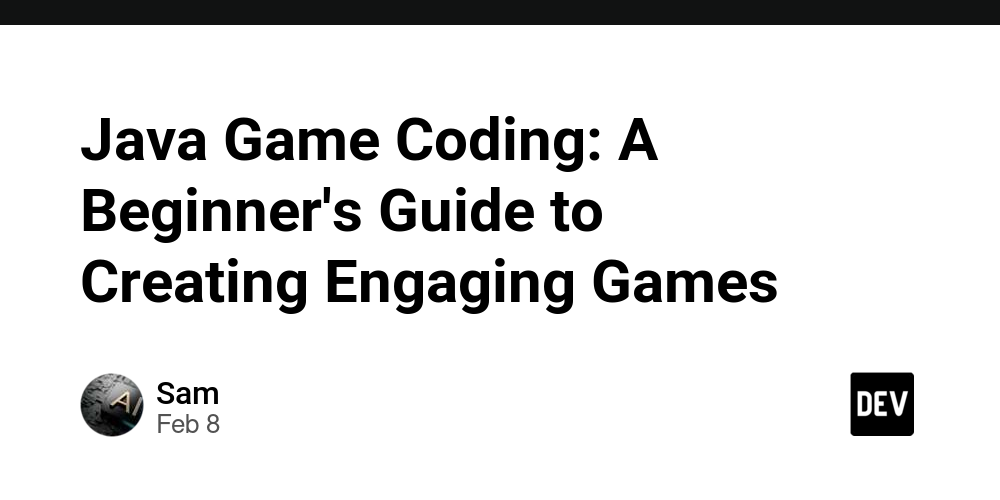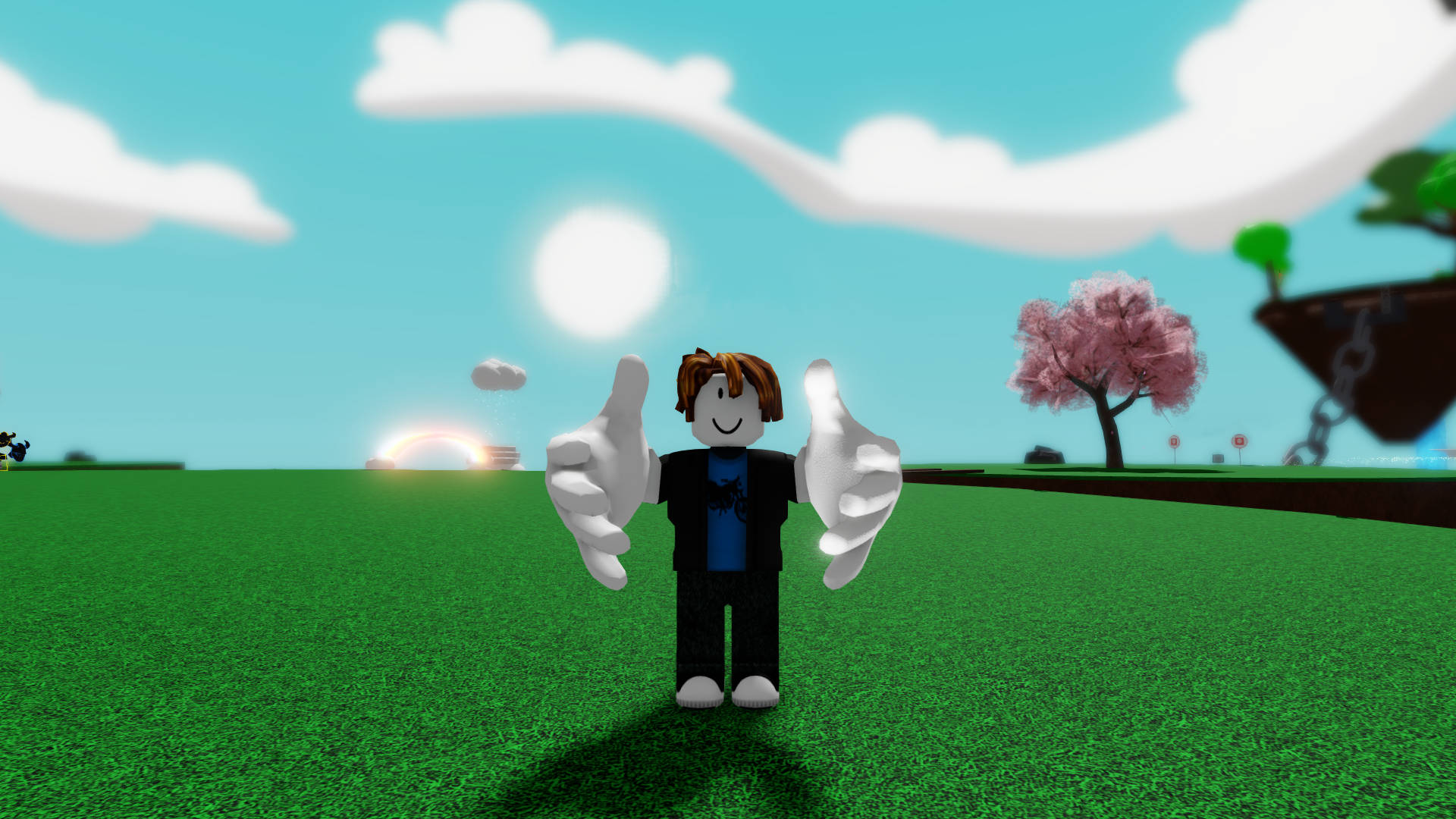Java Game Coding: A Beginner's Guide to Creating Engaging Games
Java Game Coding: A Beginner's Guide to Creating Engaging Games Introduction Java is a versatile and powerful programming language that has been widely used in various applications, including game development. With its robust libraries, platform independence, and strong community support, Java is an excellent choice for both beginners and experienced developers looking to create engaging games. In this article, we'll explore the fundamentals of Java game coding, the tools you'll need, and some tips to get started. Why Choose Java for Game Development? Platform Independence: Java's "write once, run anywhere" philosophy allows you to develop games that can run on any platform with a Java Virtual Machine (JVM), such as Windows, macOS, and Linux. Robust Libraries: Java offers a plethora of libraries and frameworks specifically designed for game development, such as LWJGL (Lightweight Java Game Library) and LibGDX. Strong Community Support: Java has a large and active community of developers who contribute to forums, tutorials, and open-source projects, making it easier to find resources and get help when needed. Getting Started with Java Game Development Set Up Your Development Environment IDE: Choose an Integrated Development Environment (IDE) like IntelliJ IDEA, Eclipse, or NetBeans to write and manage your code efficiently. JDK: Install the latest version of the Java Development Kit (JDK) to compile and run your Java programs. Understand the Basics of Java Programming Object-Oriented Programming (OOP): Java is an object-oriented language, so understanding concepts like classes, objects, inheritance, and polymorphism is crucial. Basic Syntax: Familiarize yourself with Java's syntax, including data types, control structures (if-else, loops), and exception handling. Choose a Game Library or Framework LibGDX: A popular framework for 2D and 3D game development, offering tools for graphics, input handling, physics, and more. LWJGL: Provides access to native APIs such as OpenGL, OpenAL, and OpenCL, suitable for more advanced game development. Create a Simple Game Loop public class Game { private boolean running = false; public void start() { running = true; while (running) { update(); render(); } } public void stop() { running = false; } private void update() { // Update game logic (e.g., player movement, collision detection) } private void render() { // Render graphics (e.g., drawing sprites, backgrounds) } public static void main(String[] args) { Game game = new Game(); game.start(); } } The game loop is the backbone of any game, responsible for updating the game state and rendering graphics on the screen. A basic game loop in Java might look like this: java Key Concepts in Java Game Development Sprites and Animation Sprites are 2D images or animations used in games. You can create a sprite class to handle loading, updating, and rendering images: public class Sprite { private BufferedImage image; private int x, y; public Sprite(String imagePath, int x, int y) { try { image = ImageIO.read(new File(imagePath)); } catch (IOException e) { e.printStackTrace(); } this.x = x; this.y = y; } public void update() { // Update sprite position or animation } public void render(Graphics g) { g.drawImage(image, x, y, null); } } Collision Detection Collision detection is essential for determining interactions between game objects. One simple method is using bounding boxes: public boolean isColliding(Sprite other) { Rectangle thisBounds = new Rectangle(x, y, image.getWidth(), image.getHeight()); Rectangle otherBounds = new Rectangle(other.x, other.y, other.image.getWidth(), other.image.getHeight()); return thisBounds.intersects(otherBounds); } public boolean isColliding(Sprite other) { Rectangle thisBounds = new Rectangle(x, y, image.getWidth(), image.getHeight()); Rectangle otherBounds = new Rectangle(other.x, other.y, other.image.getWidth(), other.image.getHeight()); return thisBounds.intersects(otherBounds); } public boolean isColliding(Sprite other) { Rectangle thisBounds = new Rectangle(x, y, image.getWidth(), image.getHeight()); Rectangle otherBounds = new Rectangle(other.x, other.y, other.image.getWidth(), other.image.getHeight()); return thisBounds.intersects(otherBounds); } User Input Handling Handling user input is crucial for interactive games. Java's KeyListener interface can be used to detect keyboard events: public class Game implements KeyListener { // Add KeyListener methods public void keyPressed(KeyEvent e) { int keyCode = e.getKeyCode(); if (keyCode == KeyEvent.VK_LEFT) { // Move player left } else if (keyCode == KeyEvent.VK_RIGHT) { // Move player right } } } Tips for Successful Game Developme

Java Game Coding: A Beginner's Guide to Creating Engaging Games
Introduction
Java is a versatile and powerful programming language that has been widely used in various applications, including game development. With its robust libraries, platform independence, and strong community support, Java is an excellent choice for both beginners and experienced developers looking to create engaging games. In this article, we'll explore the fundamentals of Java game coding, the tools you'll need, and some tips to get started.
Why Choose Java for Game Development?
Platform Independence: Java's "write once, run anywhere" philosophy allows you to develop games that can run on any platform with a Java Virtual Machine (JVM), such as Windows, macOS, and Linux.
Robust Libraries: Java offers a plethora of libraries and frameworks specifically designed for game development, such as LWJGL (Lightweight Java Game Library) and LibGDX.
Strong Community Support: Java has a large and active community of developers who contribute to forums, tutorials, and open-source projects, making it easier to find resources and get help when needed.
Getting Started with Java Game Development
Set Up Your Development Environment
IDE: Choose an Integrated Development Environment (IDE) like IntelliJ IDEA, Eclipse, or NetBeans to write and manage your code efficiently.
JDK: Install the latest version of the Java Development Kit (JDK) to compile and run your Java programs.
Understand the Basics of Java Programming
Object-Oriented Programming (OOP): Java is an object-oriented language, so understanding concepts like classes, objects, inheritance, and polymorphism is crucial.
Basic Syntax: Familiarize yourself with Java's syntax, including data types, control structures (if-else, loops), and exception handling.
Choose a Game Library or Framework
LibGDX: A popular framework for 2D and 3D game development, offering tools for graphics, input handling, physics, and more.
LWJGL: Provides access to native APIs such as OpenGL, OpenAL, and OpenCL, suitable for more advanced game development.
Create a Simple Game Loop
public class Game {
private boolean running = false;
public void start() {
running = true;
while (running) {
update();
render();
}
}
public void stop() {
running = false;
}
private void update() {
// Update game logic (e.g., player movement, collision detection)
}
private void render() {
// Render graphics (e.g., drawing sprites, backgrounds)
}
public static void main(String[] args) {
Game game = new Game();
game.start();
}
}
The game loop is the backbone of any game, responsible for updating the game state and rendering graphics on the screen. A basic game loop in Java might look like this:
java
Key Concepts in Java Game Development
Sprites and Animation
Sprites are 2D images or animations used in games. You can create a sprite class to handle loading, updating, and rendering images:
public class Sprite {
private BufferedImage image;
private int x, y;
public Sprite(String imagePath, int x, int y) {
try {
image = ImageIO.read(new File(imagePath));
} catch (IOException e) {
e.printStackTrace();
}
this.x = x;
this.y = y;
}
public void update() {
// Update sprite position or animation
}
public void render(Graphics g) {
g.drawImage(image, x, y, null);
}
}
Collision Detection
Collision detection is essential for determining interactions between game objects. One simple method is using bounding boxes:
public boolean isColliding(Sprite other) {
Rectangle thisBounds = new Rectangle(x, y, image.getWidth(), image.getHeight());
Rectangle otherBounds = new Rectangle(other.x, other.y, other.image.getWidth(), other.image.getHeight());
return thisBounds.intersects(otherBounds);
}
public boolean isColliding(Sprite other) {
Rectangle thisBounds = new Rectangle(x, y, image.getWidth(), image.getHeight());
Rectangle otherBounds = new Rectangle(other.x, other.y, other.image.getWidth(), other.image.getHeight());
return thisBounds.intersects(otherBounds);
}
public boolean isColliding(Sprite other) {
Rectangle thisBounds = new Rectangle(x, y, image.getWidth(), image.getHeight());
Rectangle otherBounds = new Rectangle(other.x, other.y, other.image.getWidth(), other.image.getHeight());
return thisBounds.intersects(otherBounds);
}
User Input Handling
Handling user input is crucial for interactive games. Java's KeyListener interface can be used to detect keyboard events:
public class Game implements KeyListener {
// Add KeyListener methods
public void keyPressed(KeyEvent e) {
int keyCode = e.getKeyCode();
if (keyCode == KeyEvent.VK_LEFT) {
// Move player left
} else if (keyCode == KeyEvent.VK_RIGHT) {
// Move player right
}
}
}
Tips for Successful Game Development
Start Small: Begin with simple games like Pong or Snake to understand the basics before tackling more complex projects.
Focus on Gameplay: Prioritize core gameplay mechanics and ensure they are fun and engaging before adding additional features or polish.
Test Regularly: Frequently test your game to identify and fix bugs early, ensuring a smooth development process.
Learn from Others: Study open-source game projects and participate in game development communities to gain insights and inspiration.












































































